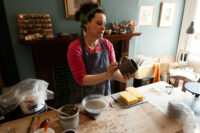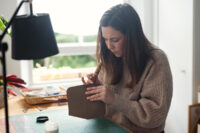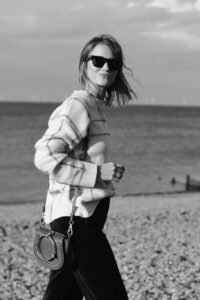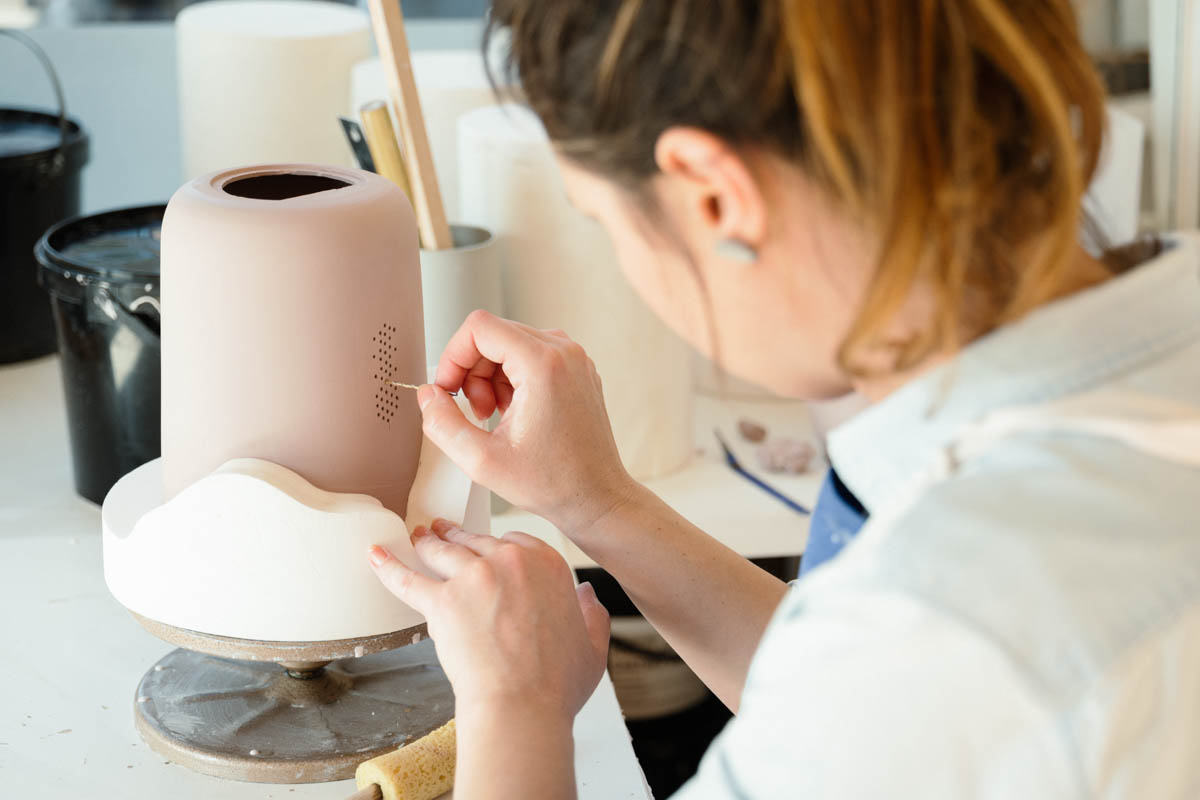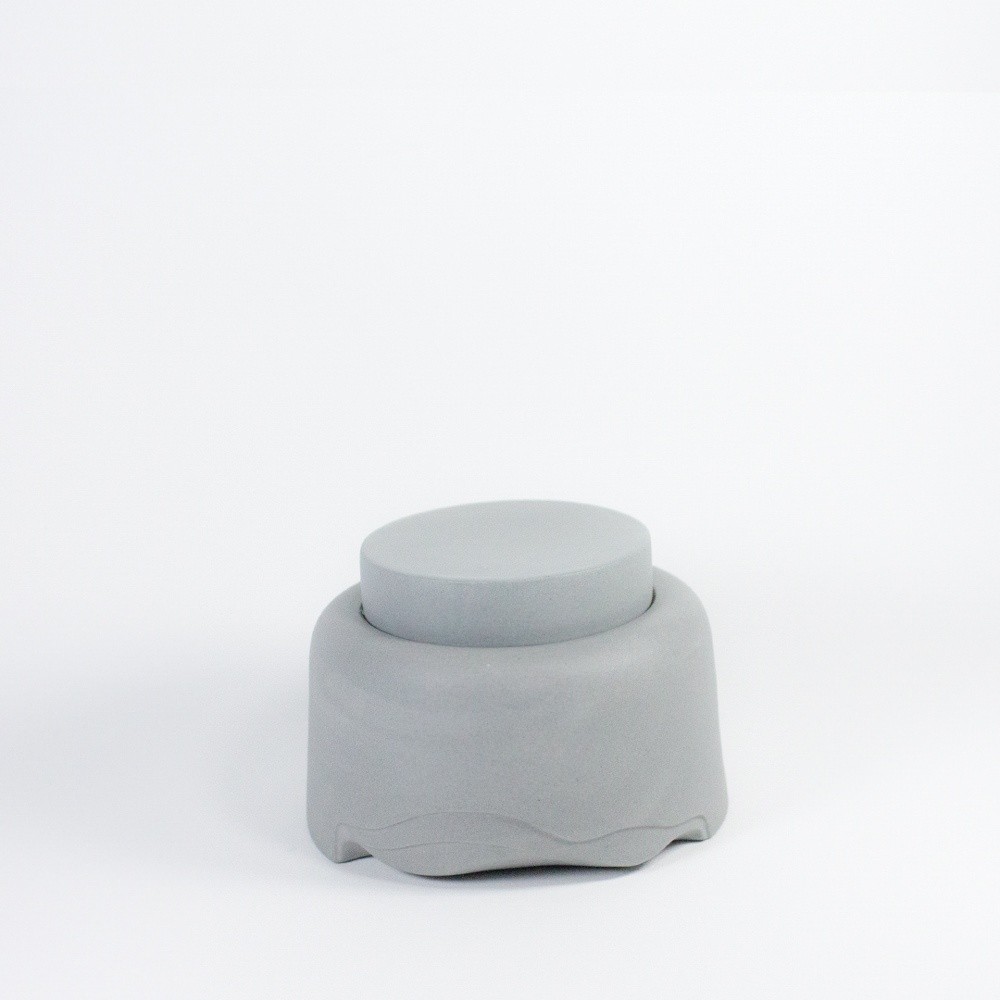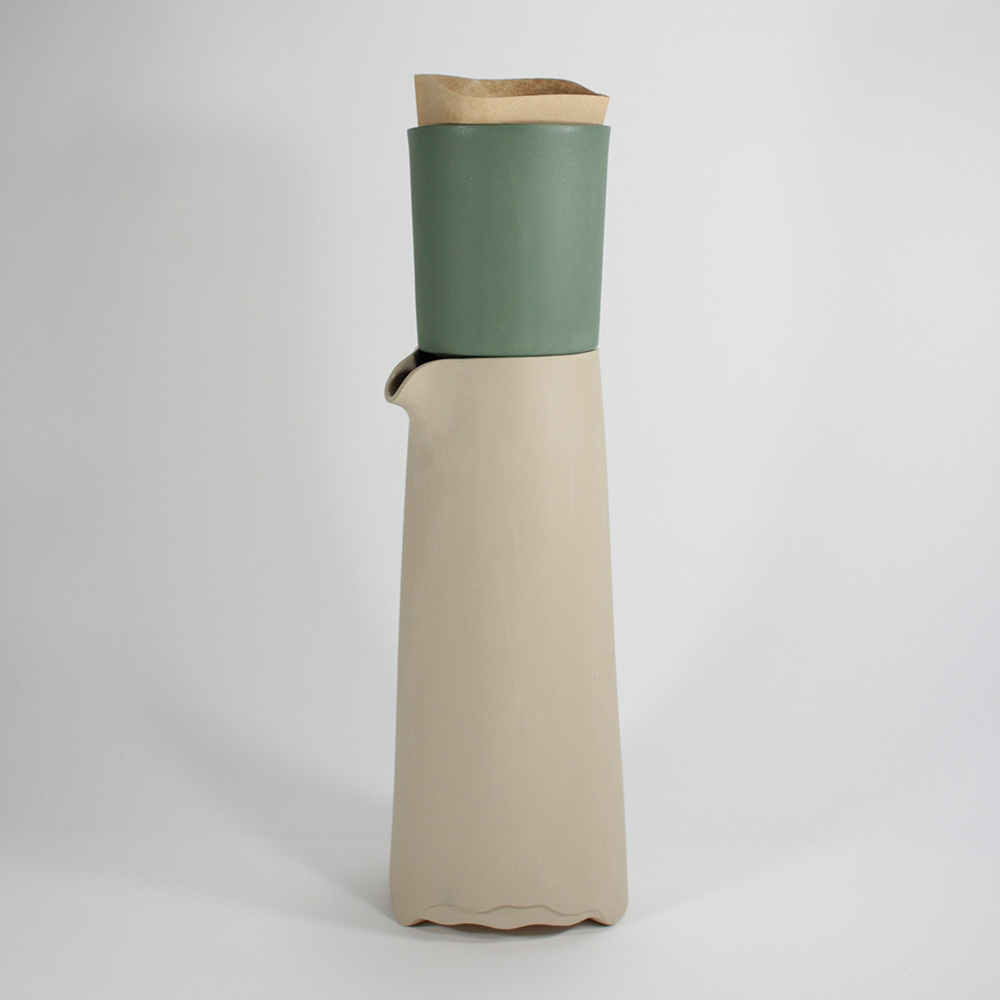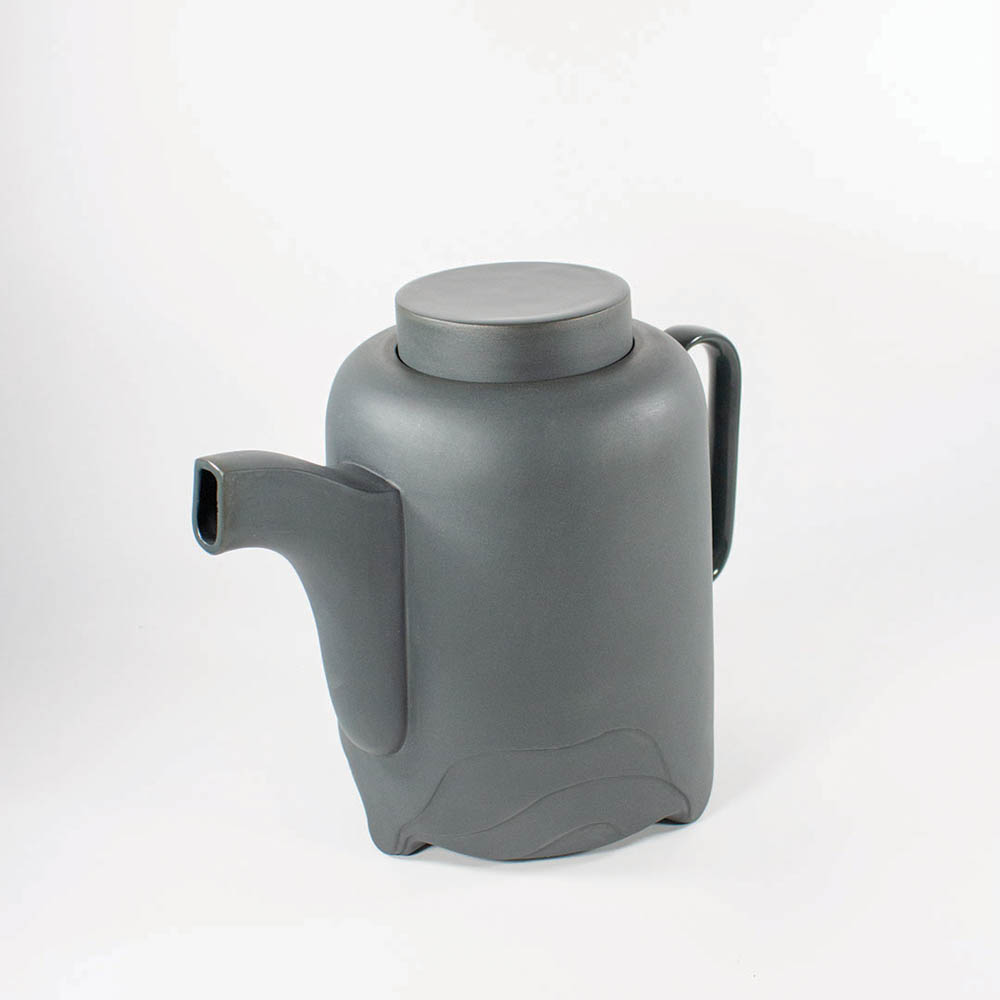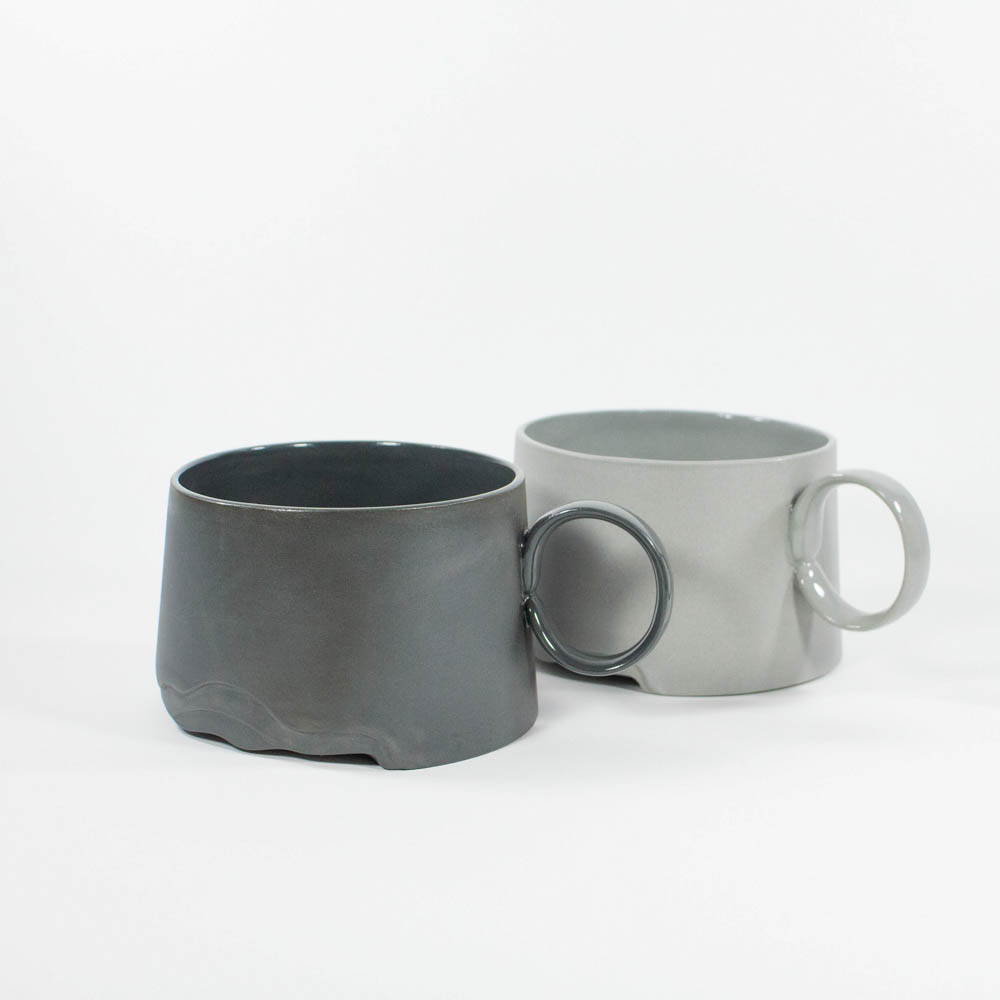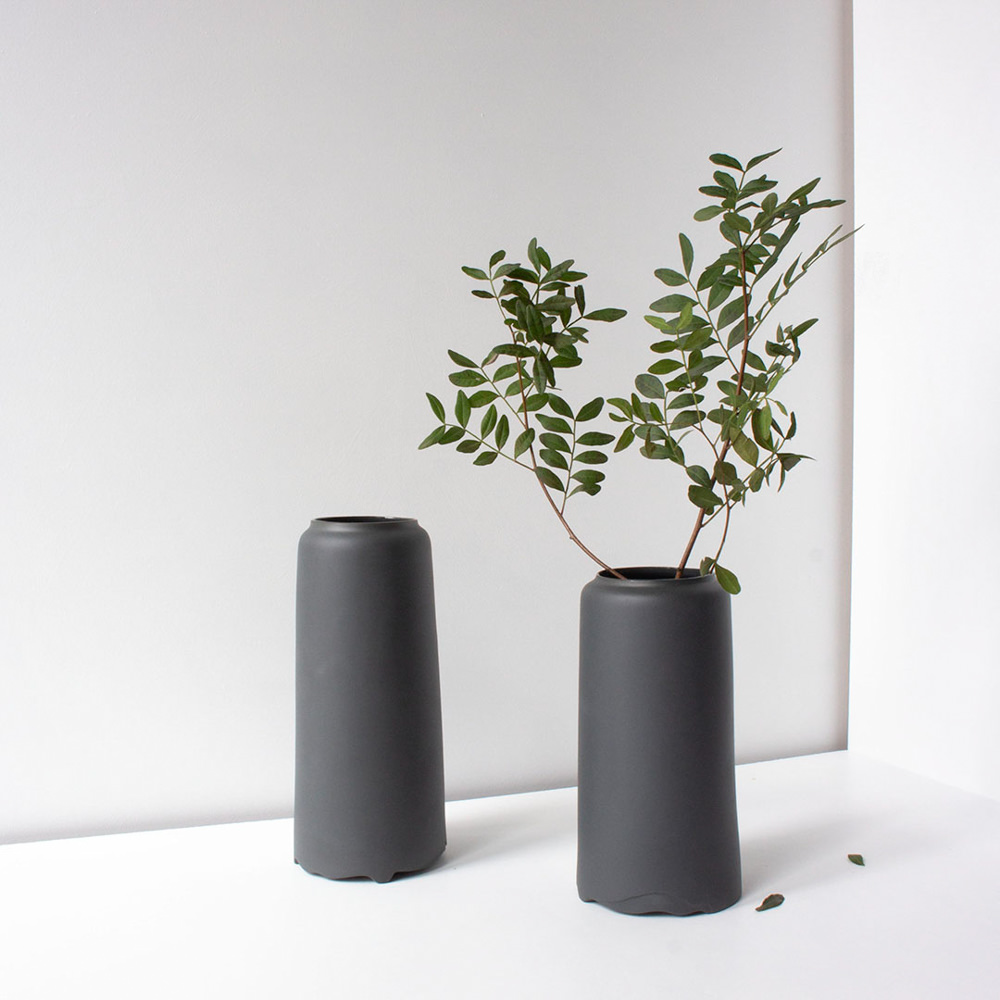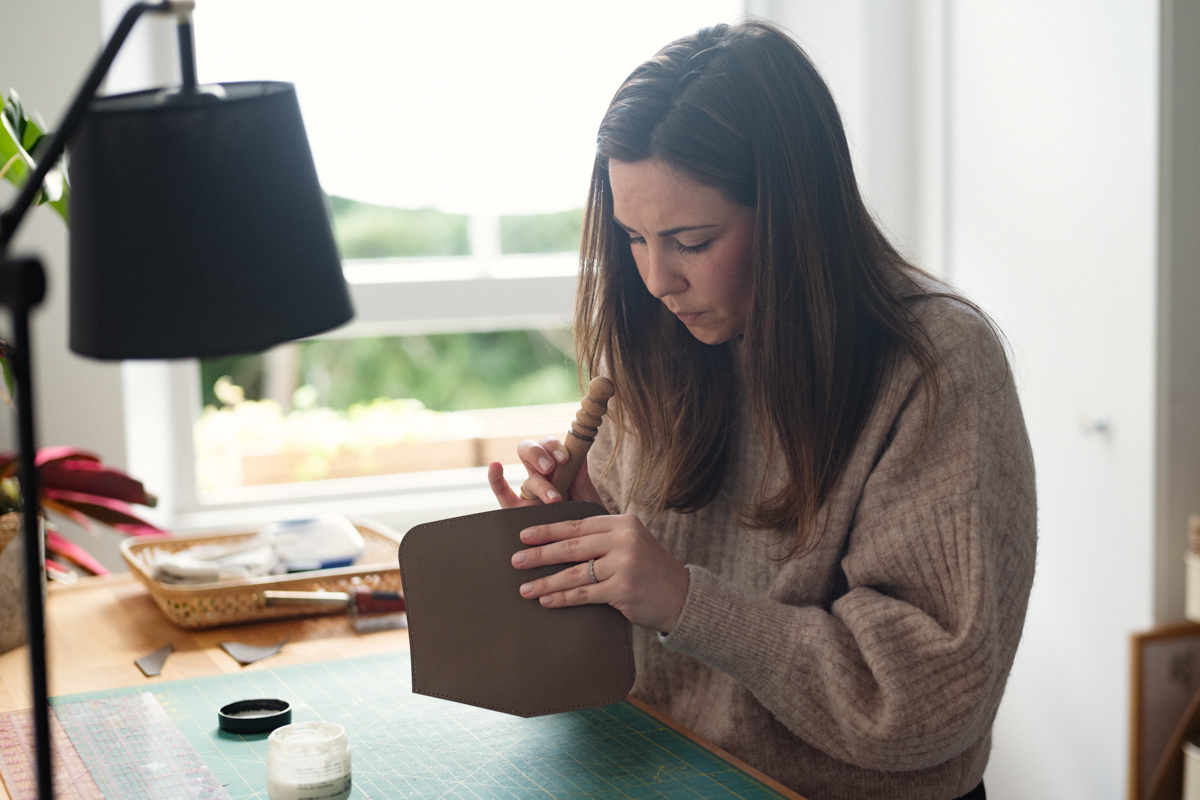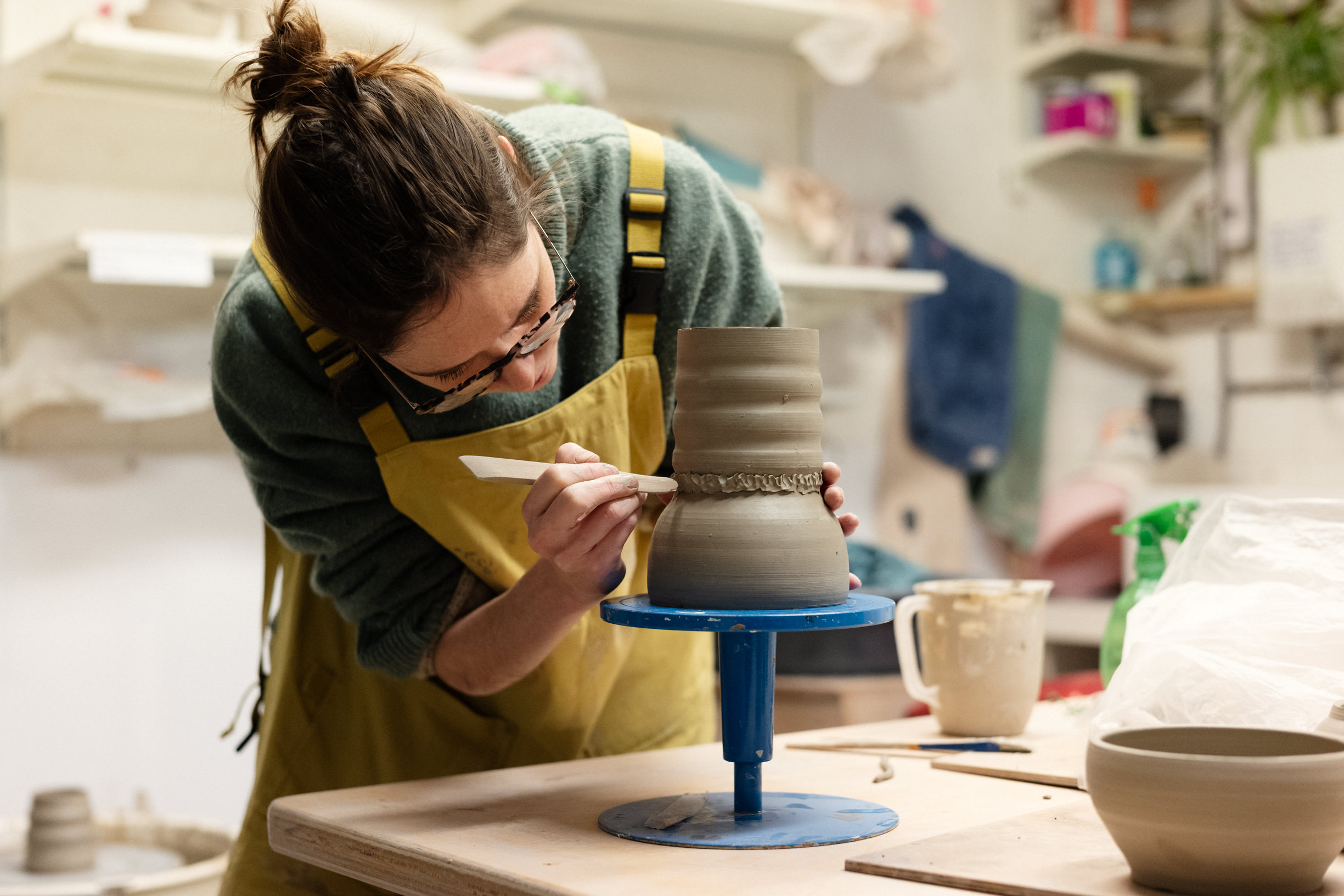Welcome to another edition of “Stories with Skills,” where we delve into the creative lives of the UK’s most talented makers. Today, we’re spotlighting Eva Radulova, a Southeast London-based ceramic designer-maker. With a journey that began at the age of 13 in a High School of Applied Arts, Eva has spent years mastering the delicate balance between tradition and innovation in ceramic design.
Eva moved to the UK in 2013 to further her skills with a master’s degree in Ceramic Design, enriching her unique style that merges classic techniques with modern aesthetics. From the refined practice of slip casting to the vibrant use of pigments, her pieces are a masterclass in craftsmanship and creativity.
In our conversation ahead, Eva shares her artistic philosophies, discusses the materials that shape her work, and opens up about the challenges she’s faced in her fulfilling career. Get ready to be both educated and inspired as you scroll down to explore the mind behind the ceramics you love.
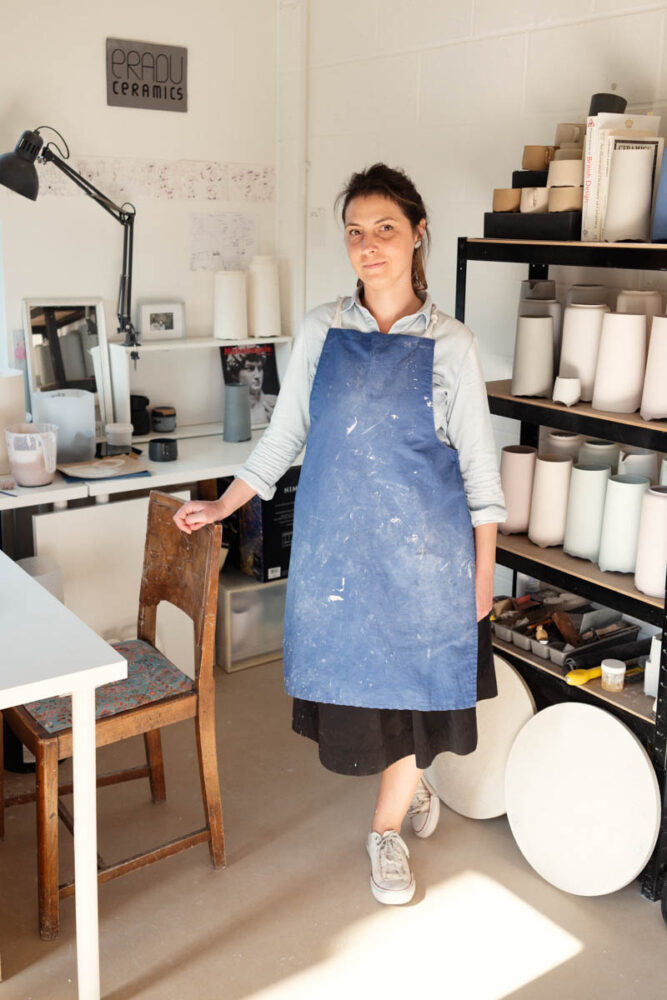
Eva Radulova
From a young age, I have always had a passion for creating and exploring. My love for colours and shapes began with playing games and soon evolved into a desire to make and create. Painting became one of my favourite pastimes, and eventually, I enrolled in an art school when I was 13. Although I didn’t consider myself a ceramicist at the time, the art school curriculum introduced me to various forms of art, including visual arts, ceramic history, and more.
Studying visual arts exposed me to the creative process, teaching me about composition and aesthetics. Exploring different techniques in various mediums allowed me to understand design as an intellectual process, which ultimately influenced my growth as a maker and designer.
I’ve always had a keen interest in product design, which led me to Staffs University’s Ceramic Design for Mass Production course. It’s an ideal program for me. Aside from the course, I was drawn to the diversity and culture of the area. Many of my favourite musicians are British, and the prospect of being part of a multicultural society was thrilling to me. Now that I am a part of it, I’m thoroughly enjoying it.
The process of slipcasting is fairly simple. A plaster mould is filled with a liquid clay mixture, known as casting slip, which is left to dry for a duration of 5 to 20 minutes. The length of time that the casting slip remains in the mould is determined by the size and type of material used. Porcelain requires less time than stoneware, which takes the longest.
Casting slip is essentially clay that has been suspended in water. When the plaster mould absorbs the water from the slip, it creates a layer of clay in the desired shape, such as a mug, jug, or teapot. The use of a mould allows for consistent replication of shapes and also allows for experimentation with different colours. It’s a very convenient process.
However, creating the mould itself requires a great deal of skill. My favourite part of the process is carving the shapes out of plaster using a lathe.
The process of design is a seamless integration of conceptualisation and execution, requiring a keen eye for detail and a creative mindset.
The traditional techniques are a great foundation to reflect on. I repeatedly need to look at the established practice and challenge it to find a way around it. For example, the mug handle didn’t want the seam line to be visible. Hence I had to come up with an alternative for it. Being able to find options adds to the satisfaction and joy of making.
Exploring trends by mixing styles, reinventing and remaking is crucial. It’s important to stay on top of the latest trends and push the boundaries of what’s possible. With a little creativity and ingenuity, you can take any style and make it your own. So whether you’re looking to stand out from the crowd or simply want to express yourself in a unique way, exploring these trends is worth your time.
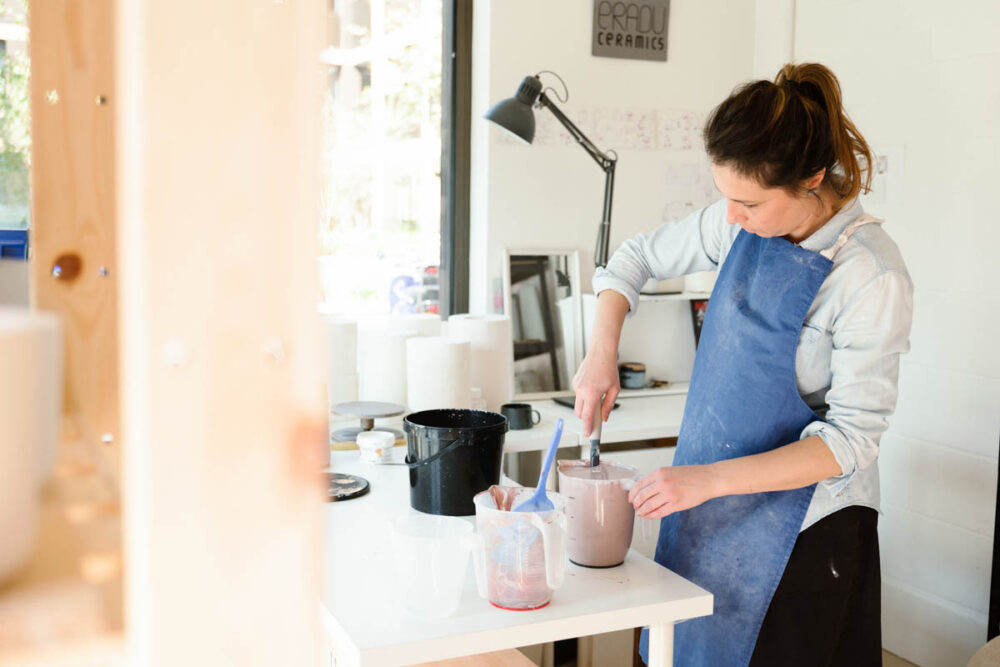
In essence, the reason behind my choice of porcelain and bone china lies in their elegance, purity, and the challenge they present. Although these materials are tough and lightweight, they are also translucent, and the body is rich in flux, making them difficult to work with. Nevertheless, their beauty is undeniable. My artworks embody a minimalist, sleek, and sharp aesthetic. I firmly believe that no other material could have brought my ideas to life in the same way that porcelain and bone china have.
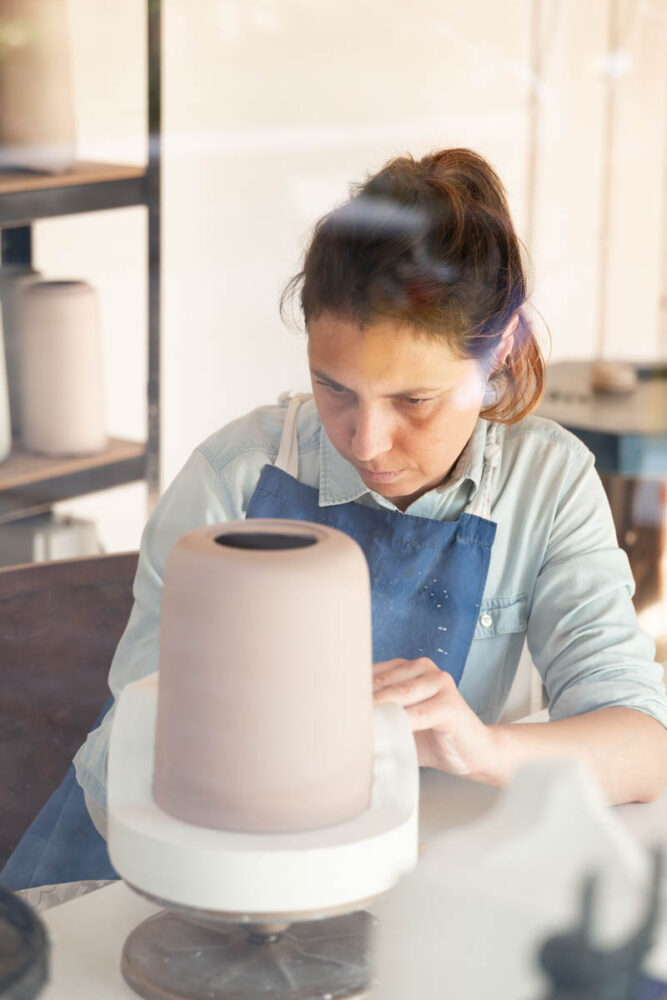
Enhancing the design and complementing its shape, is a crucial aspect of my work. The process of achieving this is pretty straightforward – I add a proportion of colour to the casting slip and experiment with it. I aim to achieve a desired aesthetic that aligns with current trends, which ultimately leads me to the vision of the final product.
Adding a clear glaze to my ceramic shapes gives them a spark, both literally and figuratively. For hygiene purposes, I glaze the inside and handle of each shape. I use clear glaze to contrast the matte surface, creating a beautiful balance within the shapes.
Ha-ha, where do I start?!
Understanding clay was a challenge for me. It goes from being soft to drying out, becoming hard and brittle, then softening again in the kiln due to the heat, and finally transforming into ceramics and solidifying permanently, all while constantly shrinking. It was difficult to predict this process without relying on educated guesses. However, with practice, I gained confidence and a deeper appreciation for this beautiful material. Learning the technical aspects of clay proved to be very helpful. Ceramics taught me the value of patience.
I have discovered that functional ceramics is my true passion after a long journey. However, this is not the end of the road for me. There is still so much to explore and create in this field. I am excited to announce a new design coming out this autumn and am also looking to expand my collections, Urban Simplicity and Colourful Essentials. Stay tuned for updates on these exciting developments.


